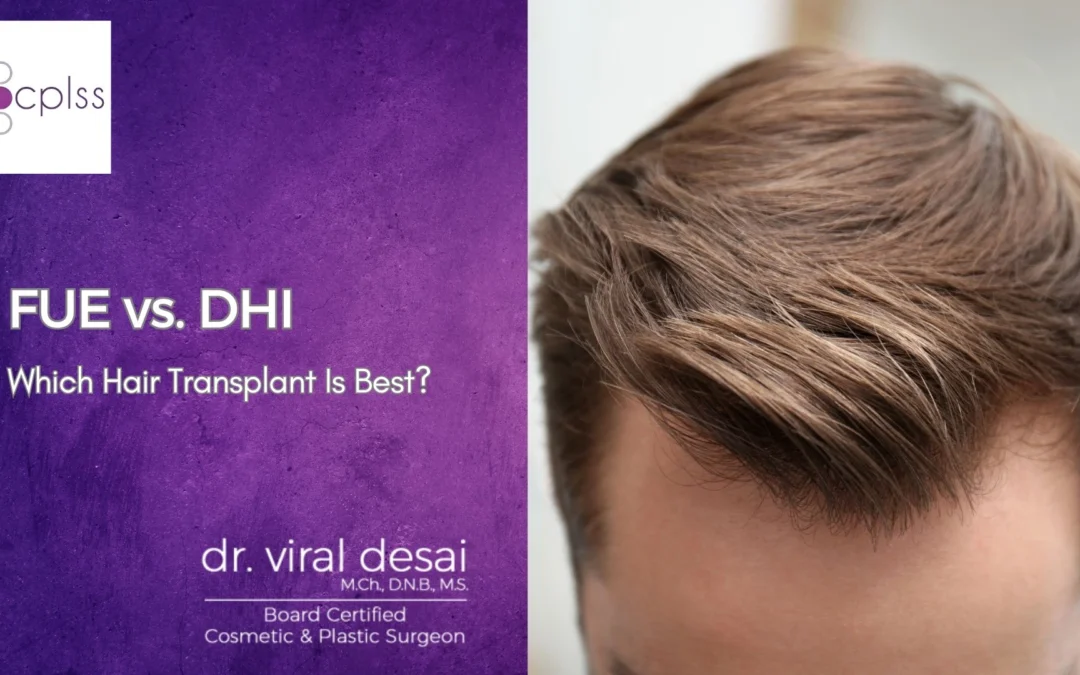Which Hair Transplant Is Best FUE Or DHI?
Are you facing hair loss and considering a hair transplant? It’s essential to make an informed choice when deciding between FUE (Follicular Unit Extraction) and DHI (Direct Hair Implantation). In this comprehensive guide, we will explore the key differences, advantages, and disadvantages of these two popular hair transplant methods. By the end of this article, you’ll have the knowledge to determine which hair transplant is best for you.
Hair loss can be a distressing experience, impacting self-confidence and overall well-being. Fortunately, modern hair transplant techniques have revolutionized the industry, providing viable solutions for those seeking to restore their hair. The two most prominent methods, FUE and DHI, have their unique characteristics, making it crucial to evaluate which one suits your needs.
Let’s dive into the details of each method to help you make an informed decision on which hair transplant is best for you.
Follicular Unit Extraction (FUE)
FUE, or Follicular Unit Extraction, is a popular hair transplant technique that involves the extraction of individual hair follicles from the donor area (typically the back or sides of the head) and their transplantation into the recipient area (where hair is thinning or bald). Here’s a closer look at FUE:
The FUE Procedure
The FUE procedure involves the following steps:
- Donor Hair Extraction: Skilled surgeons extract individual hair follicles using a micro-punch tool.
- Recipient Site Creation: Tiny incisions are made in the recipient area to prepare for the implantation.
- Hair Implantation: Individual follicles are carefully placed into the recipient site, ensuring a natural look.
Advantages of FUE
- No Linear Scarring: Unlike older methods, FUE leaves no visible linear scars at the donor site.
- Quick Healing: Recovery is generally faster compared to other techniques.
- Natural Look: The result is a natural and undetectable hairline.
Disadvantages of FUE
- Time-Consuming: FUE can be time-consuming for the surgeon and patient due to the extraction of individual follicles.
- Limited Grafts: In a single session, the number of grafts may be limited.
Direct Hair Implantation (DHI)
DHI, or Direct Hair Implantation, is another advanced hair transplant method that aims to provide natural-looking results. Let’s explore DHI in detail:
The DHI Procedure
The DHI procedure is distinctive for its use of a special Choi Implanter Pen, which allows for the direct implantation of hair follicles into the recipient area without the need for prior incisions.
Here’s how it works:
- Hair Follicle Extraction: Hair follicles are extracted from the donor area.
- Choi Pen Implantation: The Choi Implanter Pen is used to implant hair follicles directly into the recipient area.
- No Incisions Required: DHI doesn’t require prior incisions, resulting in minimal scarring and quicker healing.
Advantages of DHI
- Precise and Quick: DHI offers precise and quick implantation of hair follicles.
- Natural Hairline: It provides a natural hairline with minimal trauma to grafts.
- High Graft Survival Rate: The survival rate of implanted grafts is usually high.
Disadvantages of DHI
- Cost: DHI can be more expensive than FUE due to the specialized equipment used.
- Training and Expertise: Surgeons need specialized training to perform DHI effectively.
Which Hair Transplant Is Best FUE Or DHI?
The choice between FUE and DHI depends on your specific needs, budget, and the expertise of your chosen surgeon. To determine which hair transplant is best for you, consider the following factors:
- Budget: If cost is a significant concern, FUE might be a more affordable option.
- Scarring: If you want to minimize scarring, DHI is an excellent choice.
- Graft Quantity: Depending on the extent of hair loss, the number of grafts required may influence your decision.
- Surgeon’s Expertise: Ensure your surgeon is experienced in the chosen technique.
- Healing Time: Consider your schedule and how quickly you want to resume regular activities.
- Natural Look: Both methods can provide a natural look, but your surgeon’s skill plays a crucial role.
FAQs
Q: Are FUE and DHI permanent solutions to hair loss?
A: Yes, both FUE and DHI provide permanent results.
Q: Do these procedures hurt?
A: Local anesthesia is administered, so you shouldn’t feel any pain during the procedure.
Q: How long does it take to see results?
A: New hair growth typically begins within three to four months after the transplant.
Q: Can anyone undergo these procedures?
A: In most cases, yes, but a thorough consultation with a qualified surgeon is necessary.
Q: Is there a risk of infection after the surgery?
A: With proper post-operative care, the risk of infection is minimal.
Q: How do I choose the right surgeon for my hair transplant?
A: Research and choose a board-certified surgeon with extensive experience in the chosen technique.
Conclusion
In the quest to restore your hair and regain your self-confidence, choosing the right hair transplant method is paramount. FUE and DHI are both excellent options, each with its advantages and disadvantages. To determine which hair transplant is best for you, consider your budget, desired results, and the expertise of your surgeon.
Ultimately, consulting with a qualified surgeon is the best way to make an informed decision tailored to your unique needs. With the right choice, you can look forward to a natural, fuller head of hair and renewed self-assurance.


